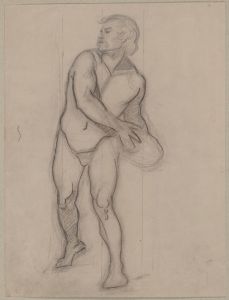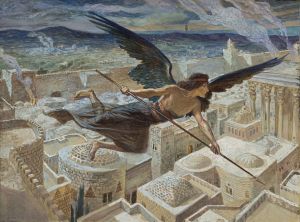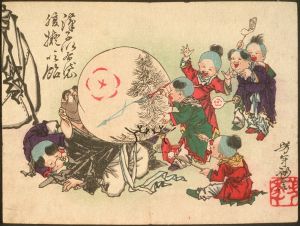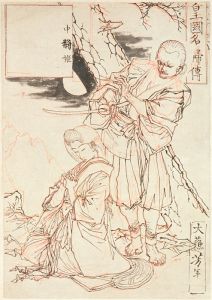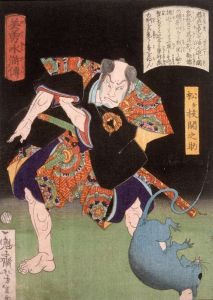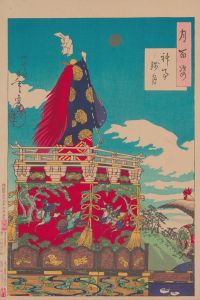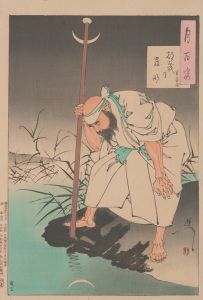
The Woman Kansuke Slaying an Assailant with a Sword
A hand-painted replica of Tsukioka Yoshitoshi’s masterpiece The Woman Kansuke Slaying an Assailant with a Sword, meticulously crafted by professional artists to capture the true essence of the original. Each piece is created with museum-quality canvas and rare mineral pigments, carefully painted by experienced artists with delicate brushstrokes and rich, layered colors to perfectly recreate the texture of the original artwork. Unlike machine-printed reproductions, this hand-painted version brings the painting to life, infused with the artist’s emotions and skill in every stroke. Whether for personal collection or home decoration, it instantly elevates the artistic atmosphere of any space.
"The Woman Kansuke Slaying an Assailant with a Sword" is a woodblock print by Tsukioka Yoshitoshi, a renowned Japanese artist known for his work in the ukiyo-e genre during the late Edo and early Meiji periods. Yoshitoshi is often celebrated for his innovative approach to traditional subjects, as well as his ability to capture intense emotions and dramatic scenes in his prints.
This particular work is part of Yoshitoshi's series "New Forms of Thirty-Six Ghosts" (Shinkei Sanjurokkaisen), which was published between 1889 and 1892. The series is notable for its exploration of supernatural themes, drawing on Japanese folklore, legends, and historical tales. Yoshitoshi's fascination with the supernatural is evident in his detailed and imaginative depictions of ghosts, spirits, and otherworldly beings.
"The Woman Kansuke Slaying an Assailant with a Sword" portrays a dramatic and dynamic scene. The central figure, Kansuke, is depicted as a powerful and determined woman, wielding a sword with precision and strength. The composition captures the moment of confrontation, with Kansuke's expression and posture conveying a sense of resolve and bravery. The assailant, caught in the act of being slain, adds to the tension and drama of the scene.
Yoshitoshi's use of color and line work in this print is characteristic of his mature style. The bold lines and vibrant colors enhance the intensity of the scene, while the intricate details in the clothing and background showcase Yoshitoshi's skill and attention to detail. The print exemplifies Yoshitoshi's ability to blend traditional ukiyo-e techniques with a modern sensibility, making his work appealing to both contemporary audiences and collectors of traditional Japanese art.
The historical context of Yoshitoshi's work is significant. During the Meiji period, Japan was undergoing rapid modernization and Westernization, which influenced many aspects of Japanese culture, including art. Yoshitoshi's prints reflect this transitional period, as he sought to preserve traditional Japanese themes while also embracing new artistic influences. His work is often seen as a bridge between the classical ukiyo-e style and the emerging modern art movements of the time.
Yoshitoshi's contribution to the art world extends beyond his technical prowess. He is credited with revitalizing the ukiyo-e genre during a time when it was in decline, due in part to the introduction of Western printing techniques and the changing tastes of the Japanese public. His dedication to his craft and his innovative approach to storytelling through art have earned him a lasting legacy as one of Japan's most important and influential artists.
"The Woman Kansuke Slaying an Assailant with a Sword" is a testament to Yoshitoshi's artistic vision and his ability to capture the essence of a story in a single, powerful image. The print remains a valuable piece of cultural heritage, offering insight into the rich tapestry of Japanese folklore and the enduring appeal of ukiyo-e art.





